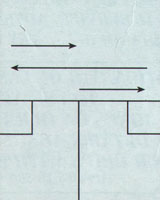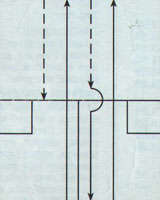This series is taken from the “Reebok fit for Squash” booklet in which British Champion Peter Marshall explains the basis of his outstanding abilities in the game.
Peter Marshall quotes:
“My aerobic endurance is vital and gives me confidence in long grueling matches. I can recover quickly from hard anaerobic rallies and continue to put pressure on my opponent”.
A. Why Get Fit for Squash?
Squash is an athletic sport. To be successful, a player has to have all the components of fitness; endurance, strength, speed, skill, agility and flexibility, coupled with a sound tactical awareness and excellent technical skills.
Skill is clearly important. The ability to hit accurate shots of varied pace is a key to success but training can develop endurance so the less gifted player can still compete with those more naturally talented. It doesn’t matter how skilful a player is. To hit the ball, first he or she has to reach it. The ability to withstand and even prolong arduous rallies can be used as a match strategy.
This series will help you decide how much training you need to do and help you plan:
• the frequency of your training i.e. how often
• the intensity of your training i.e. how hard
• the duration of your training i.e. how long
These features give rise to the acronym FID which we will use with each of the components of fitness. Please note: it is advisable to consult a doctor before you start training. The ideas presented in this series are aimed at the developed teenager and adult population.
B. Planning your Training
Training has to be planned carefully if you are to achieve your potential and avoid injury. These are the steps to take to help ensure that the training programme you design will be effective.
1) Identify the key competitions in which you would like to do particularly well. These might well be national events and there might be only two or three.
2) Similarly, identify other important events such as county and coaching weekends.
3) Identify your strengths and weaknesses.
4) Divide the year into phases for say pre-season conditioning, speed work, skills development and preparation for competition. This is called periodisation. Identify where you will concentrate on endurance, speed, strength and skill.
5) The ultimate test of your training is how you perform in matches. If you win, it is probably working. If you lose, it isn’t. However, one or other of the components of fitness could be your undoing so it is important to evaluate these periodically. This can be achieved by field or laboratory based fitness tests at the end of particular phases of the overall programme. Increasingly these assessments tend to be laboratory based and the physiological status of players can be examined. This sports science support has a key role to play in the search for the most effective ways to train and it is vitally important that players and coaches have access to these opportunities.
C. Endurance in Squash
Endurance is the ability to keep on exercising by providing the energy to the muscles. This energy is provided in two ways.
• Aerobically which uses oxygen
• Anaerobically which does not use oxygen
Anaerobic energy release occurs when exercise is at high intensity i.e. during hard attacking play. This type of play can lead to the production of lactic acid which has a fatiguing effect and tells us to slow down. Aerobic energy release occurs when exercise is of lower intensity for instance when a player deliberately slows the pace of play by the use of lobs and drop shots. The aim of endurance training is to develop the ability to sustain play at high intensity. How does this apply to squash?
Squash matches can last from 90 minutes up to 2 hours. The only formal rest a player has is a maximum of one and a half minutes between games; play otherwise is continuous. Even breaks between service is usually only five to ten seconds. Rallies within matches can be virtually flat out, with players operating at about 90% of their maximum for the whole of play*.
Oxygen is carried to our muscles by blood. Supplying more blood and hence more oxygen helps delay the onset of anaerobic energy release and so resist the effects of fatigue. Well developed lungs are needed to remove oxygen from the air that we breathe and a well developed heart is needed to pump the oxygen round our body to where it is needed. In addition, this pumping can also remove waste products more effectively. To develop the heart and lungs there are two broad training types:
• Steady, optimal intensity training
• Varied intensity interval training
Optimal Intensity Training
To improve aerobic fitness you should aim to exercise for about three times a week (frequency) at a constant intensity equivalent to 60-90% of your age predicted heart rate (intensity) for 20-30 minutes (duration). The exercise involved would usually be running but could also be swimming, cycling, skipping and step i.e. activities which use major muscle groups in the body.
Interval Training
Interval training involves bouts of high intensity exercise interspersed with low intensity recovery periods. The high intensity exercise should raise heart rate to about 90% of maximum and the recovery should be sufficient to lower heart rate to about 60% of maximum. Intervals simulate the game’s movement patterns and physiological demands. The training can be based on and off court. On court training can be especially beneficial because it is specific to the sport. On court training can be shuttle running, ghosting or pressure drills.
*Maximum heart rate in beats per minute is usually 220 - age. For example, maximum heart rate for a twenty year old player would be 200 beats per minute i.e. 220 - 20. 90% of this is 180 beats per minute.
D. Off Court Training
Off court training adds a variety and can be done on an athletics track, on parkland or pavements. The principles of on court training are used; repetitions, sets and active recovery are selected to provide the intensity and duration of exercise. Distances run can be from 50-800 metres. For example, on an athletics track a session might be 6X200 metres in 35 seconds with a jog round recovery.
The bulk of endurance training is done during the off season from May to August / September with three or four sessions each week. Allow a day of easy training or even complete rest between sessions. A guide to your endurance capability is the improvements in endurance can also be gauged by the time taken to do a one or one and a half mile run. The following items in minutes are guidelines which should help you to monitor your improvements.
If you are new to endurance training, start off easily and build up gradually. This build up is called progression. The benefits will come. Players who neglect endurance are the ones who tire quickly.

E. Ghosting
Ghosting involves playing shots without the ball and is an excellent form of endurance training for squash.
1) Start at the T, run to the forehand side wall and play an imaginary forehand straight drive.
2) Use the momentum of the stroke and move to the opposite wall and play an imaginary backhand straight drive.
3) Move back to the forehand wall and so on.
• You should be able to play twenty “shots” in 25-30 seconds.
• Take 30 seconds active recovery. Do this five times and so complete a set.
• Take five minutes active recovery and do another set. As you get fitter you can alter the ghosting as per the shuttle runs.

Pressure Drills
1) Play “non-stop” squash with a partner i.e. play for two minutes without any break whatsoever.
2) Keep a record of the score.
3) Subtract the loser’s points from the winner’s.
4) The loser runs this number of lengths of the court!
5) Play for another two minutes.
Shuttle Training
1) Start from the T, run forwards and touch the top of the tin.
2) Run backwards to the T then twist and run forwards to the back wall.
3) Touch the back wall at about knee height.
4) Turn and run forwards to touch the top of the tin again and so on.
Aim to reach the tin and back wall on say your forehand foot and touch with your right or left hand as appropriate.
By starting and finishing on the T, you can do this on your own and time yourself using a watch on the floor. Count every time you touch the tin. Aim to 10 touches in less than 60 seconds and then have 60 seconds active recovery.
Do six to ten of these ten touch repetitions. This comprises a set. As your endurance improves you can run faster, increase the number of repetitions, reduce recovery time and increase the number of sets.
*Active recovery is jogging and walking and aids recovery. Never spend the recovery lying down or sitting, keep on the move. This speeds up the removal of waste products from exercising muscles by maintaining blood flow.

|